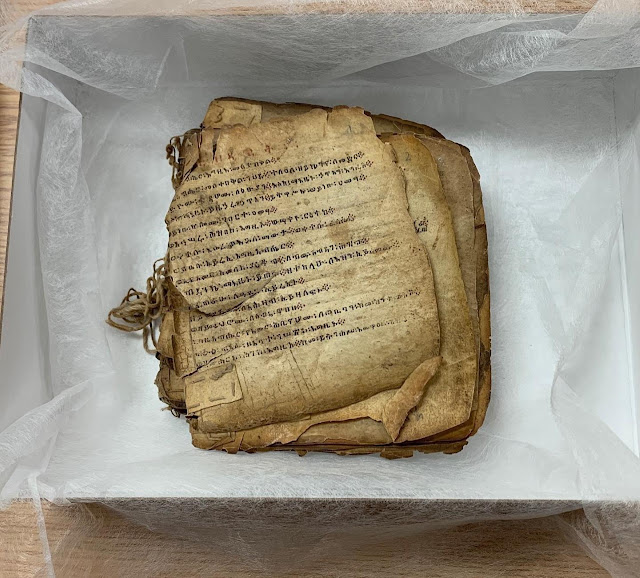scripture's story
Dr. Perrin told me not to get too comfortable when I walked into his office for our seminar on Wednesday. "Want to go on a field trip?" he asked, and of course the answer to that is always "YES." So we headed over to the TWU Archives.
On the way over, he told me that they had just recently come across an Ethiopian manuscript in the archives that is hundreds of years old. But that wasn't even what we were going there to see.
We had been talking a lot about the literature of the Old Testament and the literature outside the Old Testament that develops figures such as Noah, Abraham and Sarah, Miriam, Moses, and others. Ultimately, I was beginning to understand that the Bible is not a book clearly handed down to us from specific sources and events. Rather it is a cultural project of a religious people who were constantly growing and expanding the treasury of literature around these beloved characters and their experiences of God. The Septuagint - the Greek translation of the Hebrew Bible - contains some of these stories that we wouldn't find in our normal Protestant Old Testaments today. We pulled out a huge and beautiful facsimile of Codex Vaticanus, the oldest known copy of the Septuagint and New Testament. A lot of the pages were just plain columns of Greek uncials with an occasional note in the margin. But Dr. Perrin told me to open to the story of Daniel and Susanna, and when I saw the page pictures below, it literally took my breath away.
Even if you can't read Greek, this page is stunning. There is so much interaction happening between the inherited text in the bold columns and the notes filling up every open space on the page. There is a culture of conversation around scripture here that we lost as soon as we began printing exact copies of the same Bible over and over rather than wrestling with how to pass on this text to the next generation.
Something about this page taught me more than books and lectures could. Seeing the handwriting of people who wrote this down and added their own thoughts brought me into their presence. I learned more deeply how much I am invited to be part of an ancient tradition that does not just read the text but wrestles with it, adds to it, applies it, and finds themselves in it.
It can be scary to learn about the story of the Bible because we fear instability and uncertainty. But there's something even more beautiful and even more human in coming to grips with the uncertainty. There were many, many generations of Jews who composed and edited and collected and embellished and cherished these beloved tales. I'm honored to be walking in their footsteps.






Comments
Post a Comment
thoughts so far